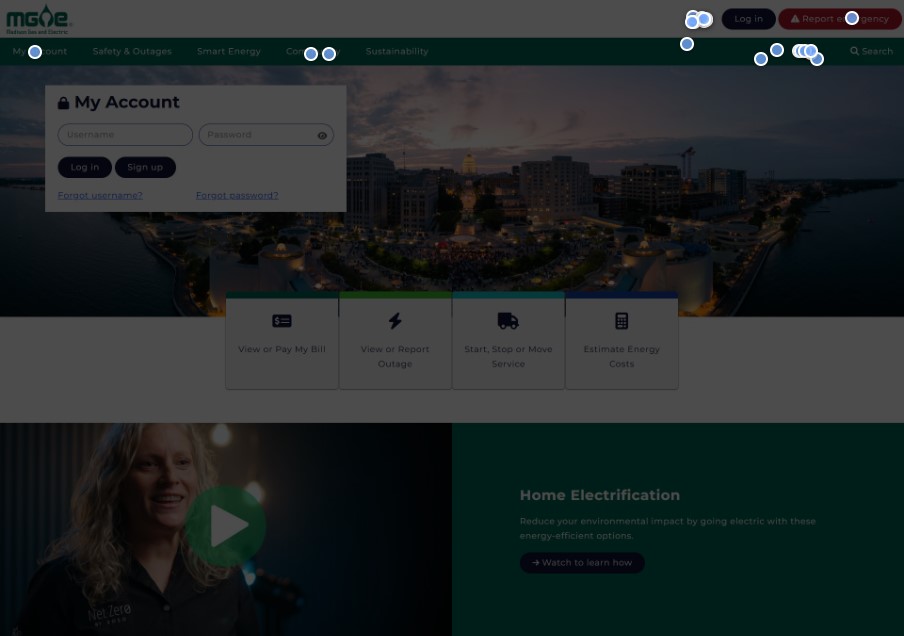Overview
MGE needs a workflow that allows content editors to submit English content to Google Translate, receive translated content back, and publish polished multilingual pages. Being the "Community Energy Company", they care about the customers needs and wants, so validating machine translation to meet user expectations is a key part in the project.

Multilingual Project
Goal:
Multilingual content workflow - English → Google Translate API → editor review → site publish
My Role:
UX Designer, Researcher, Process Owner (set up content editor flow, testing, and QA)

Timeline:
2+ years
Areas of Focus:
Localization workflow, translation quality, content-editor UX, testing (preference & first-click), community research

The Problem
MGE needs an efficient way to translate and publish content without a large localization vendor, while maintaining trust and accuracy. Machine translation is fast but can sound unnatural. Editors need a way to request translation and have the ability to edit it for better accuracy and inject empathy and authenticity. The Website also needs a clear and easy way for users to translate content from one language to another.

Approach
- Researched local Spanish-speaking population in Dane County to prioritize languages and recruitment channels for testers.
- Ran two UX tests: Translation type preference test (native human vs Google API), First-click to identify where users expect to find a language toggle.
- Implement an editor workflow: Select content → Request Google Translate → Translated text returned into editor UI → Post-edit and publish.
Findings
- Local demographic research: Spanish is the largest non-English language group in Dane County; ~8% of county residents identify as Hispanic/Latino (~42–43k people), so Spanish should be prioritized for initial localization and outreach.
- Preference test: 100% of participants preferred native (human) translations over the Google-API output.
- First-click test: participants expected the translation toggle in the top-right of the header/page.

Summary
There are many moving parts with this project and people involved, which has made it slow moving. We have made strides to improve the process, development, and workflow; but there is still much to do. This has been a good learning experience when it comes to resource allocation and shifting priorities. It has taught the importance of staying on top of tasks, keeping in touch with partners, and to keep moving forward. We have plans to conduct more user testing, build the connection to Google Translate, build and test workflow, and gain valuable insight from internal users. Equity & accessibility for our customers is very important to me and I have to learn to navigate challenging bumps in the road.

